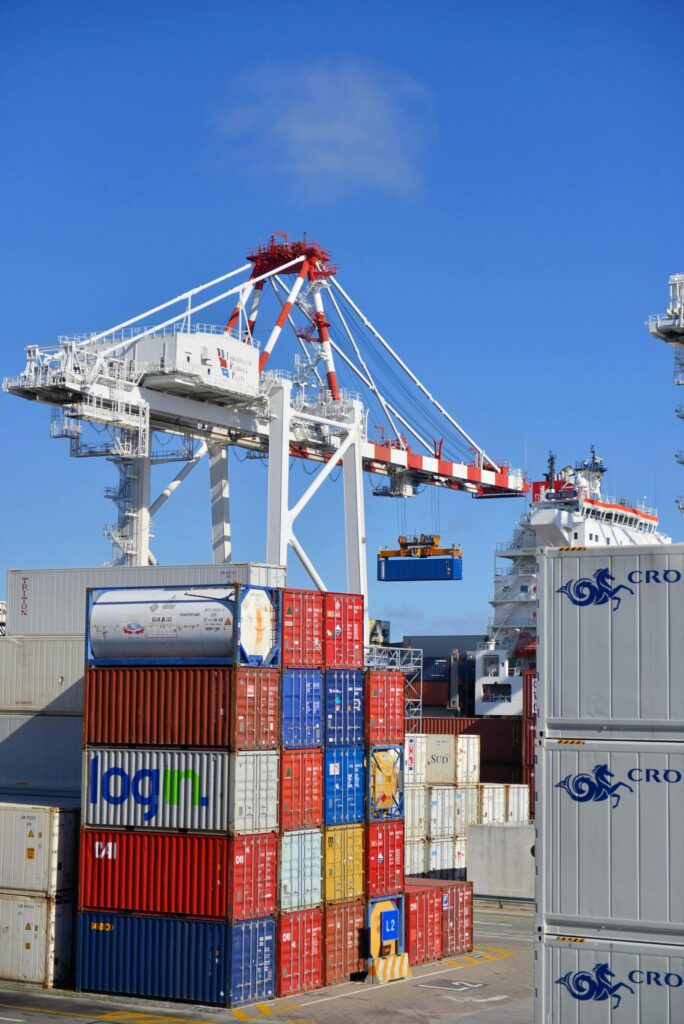We recently sat down with our CEO, Chris Ruff, to discuss what he sees coming for the future of customer experience. Here’s what he had to say about what’s next in customer communications technology, how the customer experience will continue to evolve, emerging trends in the industry, and where Glympse is headed next.
Q: How will upgrades in technology impact the way businesses and brands interact with their customers as we head into 2022?
A: The expectations of today’s customers are constantly changing — the modern customer experience needs to go above and beyond traditional customer service methods. It must integrate customer preferences as well as their expectations into each consumer-brand touchpoint.
Meeting these expectations is not easy! Recent research shows that 67% of customers say their standards for good experiences are higher than ever. This is exactly where technology comes into play.
The emerging customer communications technology of today will power the customer experiences of tomorrow. There’s no shortage of new ways to connect with customers, from augmented reality to voice assistants to cloud technology and more. And this list will continue to expand. So brands must find the right technology and the right partner to work with.
Q: How do you think technology will shape the customer experience in the future?
A: I see at least four areas where leveraging technology can shape and boost a company’s customer experience (CX) efforts:
Technologies like feedback surveys, interaction analyses, and other tools can collect data on customers and their experiences. Companies can combine data from these tools to link customer perceptions captured in, for example, a feedback survey to their behaviors when engaging with various brand touchpoints. In addition, these technologies help monitor the results of efforts over time as they evaluate CX feedback collected over time.
- Analytics and Reporting To Track and Adjust CX Actions
These technologies analyze engagement data collected on the fly, tracking how well CX efforts enhance experiences, distributing insights to CX stakeholders across the brand.
- Experience Execution and Optimization To Act on Real-Time Insights
These technologies directly engage customers while incorporating CX insights into business decisions and actions that affect experiences. Internal capabilities include managing CX improvement activities in customer touchpoints such as call centers or chatbots; external capabilities include A/B testing and personalization embedded in marketing and e-commerce stacks.
- Personalized Customer Journeys Using the Power of Location
Personalizing customer journeys can go a long way with your audience. Utilizing location-powered apps like Glympse can boost upsell or cross-sell opportunities. On average, customers check their service technician’s arrival time or product delivery for 6-9 minutes using the app or tracking link. Take advantage of this engagement time by serving your customers relevant and timely ads based on their current purchases.
Q: Curbside pickup has become a crucial element of customer service during the pandemic, and it seems like it’s here to stay. What future trends do you see coming for curbside pickup?
A: Last year, concerns about health and safety forced many retailers to offer click-and-collect options like BOPIS and curbside pickup. Even with lockdowns being lifted, the trend hasn’t decreased in popularity. In fact, according to Statista, the growth rate for click-and-collect will be upward of 10% this year.
At the same time, the National Retail Federation (NRF) found that BOPIS improved the customer experience for 70% of surveyed consumers by increasing convenience. And given that 90% of those surveyed customers are more likely to choose a retailer based on convenience, it should come as no surprise that curbside pickup (or BOPAC, buy-online-pickup-at-curbside) will be a game-changer this upcoming peak season.
Q: What are some of the industries you see growing the most in their use of location-intelligent technology over the coming years?
A: I imagine that the industries set to grow in their use of location-intelligent technology include Healthcare/Med-tech, Telehealth, Retail, Fin-Tech/Financial, and Hospitality/Hotel. And in field service, we see an even bigger increase coming than we have in the past seven years.
Interestingly enough, here at Glympse, we are hopeful to soon, regardless of the industry, offer our location technology to more small-to-medium (SMB) sized companies. We receive inquiries from SMBs daily to use Glympse, and we hope that reality is not far down the road.
Q: Are there emerging uses for location-based technology that we haven’t seen yet? How soon do you think those will become a reality?
A: Location, location, location: these are three of the most important words in commercial real estate.
This is no different in other industries — we can all agree that location has always been key to every commercial business. Yet, today, it seems that a company will have trouble succeeding at commerce, logistics, distribution, and supply chain management without location intelligence.
Location intelligence delivers valuable insight for planning. Executives and supply chain managers need this level of intelligence to identify and analyze opportunities and be more agile. Additionally, this same data-driven capability helps model buyer behaviors geographically so companies can adapt their operations as changes occur. And it provides visibility to ensure ethical, sustainable supply sources.
I spent many years in the automotive industry and found that several auto manufacturers use location intelligence to develop advanced driver assistance systems, the foundation for developments in autonomous vehicles (AV). Maps are currently consumed in two dimensions; adding more precision and easy connectivity to transfer data helps build more efficient routing.
Imagine being able to direct trucks to travel a path with a lesser gradient or enabling better prediction in supply chain mobility needs. The use of better location data provides more efficient data on faster routes for pickups and drop-offs.
Location intelligent technology is also a step towards user convenience. For example, we have all faced challenges when looking for a parking spot in a busy downtown area. Imagine location intelligence, paired with connected vehicles, guiding you to an available parking spot without you having to drive around each block over and over again. In the next few years, we will see location intelligence leveraged to simplify life, increase operational efficiency, and save time.
Q: In what ways is Glympse poised to meet the demands of these up-and-coming trends?
A: At Glympse, we have spent over 13 years providing location-sharing experiences that strike a harmonious balance between accessible, safe, useful, temporary, and private. With millions of Glympses sent via our consumer app each month, we know a thing or two about location-sharing with our customer communications technology. We have mastered the nuances of building interactive experiences based on location data.
So we are uniquely poised to meet the demands of these up-and-coming trends.
We work with the world’s best companies who come to us to help solve their problems and meet their need for real-time communication and control during the moments their customers are anxiously waiting for a product or service transaction. Issues we solve include:
- Limited choices for communication
- Lack of control
- Reactive communication
- Lack of data for decision making
- Broad delivery or service windows
We help drive proactive conversations between customers and brands during the critical moments that matter. This intelligent, two-way communication helps deliver positive customer outcomes while decreasing operational costs.
Q: What’s next for Glympse?
A: First, we hope to be able to help companies of all sizes, not just enterprise companies.
Second, we hope to assist service companies in increasing their revenue through our day-of-service advertising feature. We know that in the field service business, the technician is the employee who spends the most facetime with a customer, organically establishing a rapport and trust based on customer service and quality of work. As a result, technicians are being placed into a salesperson role: recommending follow-up service, upgraded equipment, and warranty packages while they are already in front of the customer.
Most of us can agree that technicians tend to be to-the-point, fix-the-problem, ease-your-pain kind of people. They are fully dedicated to fixing systems; they’re not going into the home to make a sale. Through our day-of-service advertising solution, we can show warranty package information, recommendations on follow-up service deals, and ads for upgraded equipment, all of which are included in our solution’s price. This solution helps increase revenue for brands while keeping service technicians happy.
All in all, Glympse is poised to meet the customer experience challenges of the future with location-intelligent customer communications technology that serves businesses, customers, and employees alike.
If you’d like to learn more about how Glympse can help your business improve the customer experience while boosting employee efficiency and reducing costs, contact us today.


